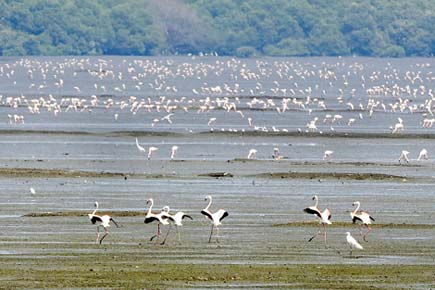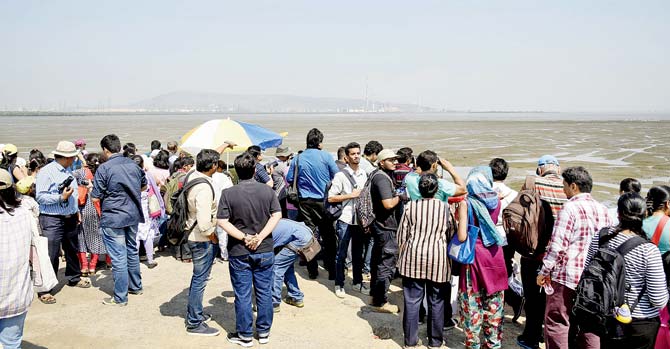It’s that time of the year when hundreds of flamingos fly down to Mumbai. Before you grab your binoculars, here’s what you need to know about the Mumbai's winter guests


The birds at the Sewri mudflats
ADVERTISEMENT
For many winter lovers in Mumbai, the slight nip in the air is too mild to offer any gratifying experience of the season. So, they head north to feel the real chill — bonfires, heaters, mufflers, gloves, the works. But Mumbai’s marginal winter also comes as a relief for some. And in what almost seems like the perfect exchange, as the city sees off its avid travellers to the Rann of Kutch, the white sandy expanse of Gujarat sends its winged inhabitants to Mumbai for a gentler climate. Come January and parts of the city will don a layer of pink, as flamingos fly for over 600 km to make Mumbai their home until the first monsoon showers arrive.

Lesser flamingos at Airoli Creek
“Flamingos were first spotted in Mumbai back in 2000, and large flocks have since been seen here every winter from 2003. Their time of migration and the number that arrives in the city depends on various factors like the weather and rainfall in Kutch, as well as the suitability of the wintering habitat, level of disturbances, and hazards in the flying route,” says Bilwada Kale, public relations officer, Bombay Natural History Society (BNHS). A part of the category of birds called waders, flamingos feed on small marine animals and plants in brackish shallow water. This explains why the mudflats of Sewri are their preferred destination in the city.

People soak in the view of the birds at Flamingo Festival organised by the Bombay Natural History Societyâu00c2u0080u00c2u0088earlier this year
BNHS will soon be organising a birding trip to the Sewri mudflats once the flamingos arrive in substantial numbers. “The ideal time for watching the flamingos is decided according to the tide timings; two hours after low tide is what’s most preferable,” explains Kale. While BNHS encourages people to carry their own set of binoculars, it makes spotting scopes available at the site for a better, more detailed view of the flamingos. As you peer into the scopes, experts from the organisation tell you all about the birds’ life cycle and migratory routine. Lesser-known migratory birds like smaller waterbirds are also found at the mudflats, and you can learn all about them, too.
 Subscribe today by clicking the link and stay updated with the latest news!" Click here!
Subscribe today by clicking the link and stay updated with the latest news!" Click here!






